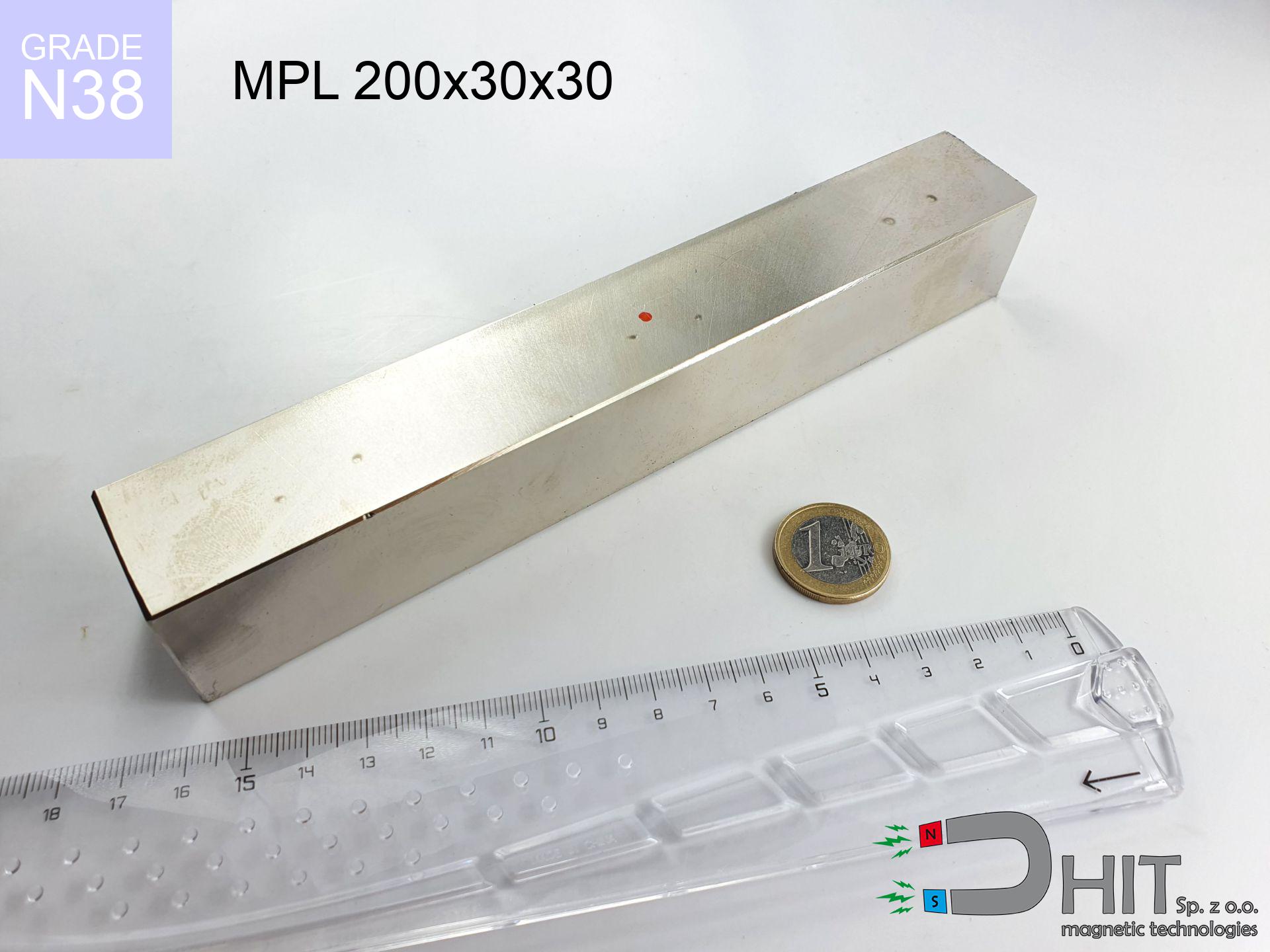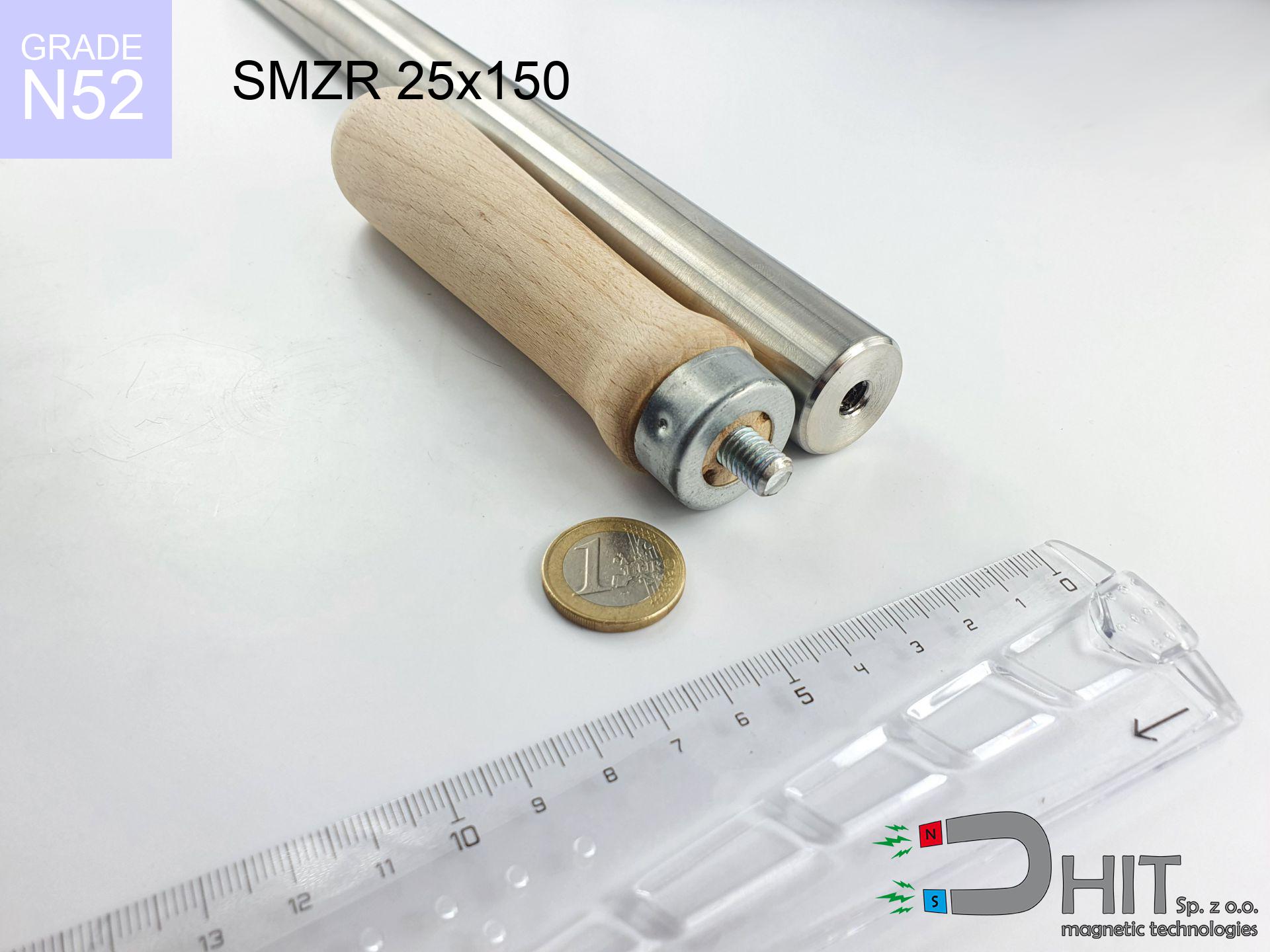MW 20x35 / N38 - cylindrical magnet
cylindrical magnet
Catalog no 010043
GTIN: 5906301810421
Diameter Ø [±0,1 mm]
20 mm
Height [±0,1 mm]
35 mm
Weight
82.47 g
Magnetization Direction
↑ axial
Load capacity
38.71 kg / 379.62 N
Magnetic Induction
595.77 mT
Coating
[NiCuNi] nickel
49.52 ZŁ with VAT / pcs + price for transport
40.26 ZŁ net + 23% VAT / pcs
bulk discounts:
Need more?Do you have problems deciding?
Pick up the phone and ask
+48 888 99 98 98
otherwise contact us by means of
our online form
through our site.
Lifting power along with appearance of magnetic components can be analyzed using our
force calculator.
Same-day processing for orders placed before 14:00.
Magnetic properties of material N38
Physical properties of sintered neodymium magnets Nd2Fe14B at 20°C
Shopping tips
Strengths as well as weaknesses of neodymium magnets.
Apart from their notable power, neodymium magnets have these key benefits:
- Their power is maintained, and after approximately 10 years it decreases only by ~1% (according to research),
- Neodymium magnets are exceptionally resistant to loss of magnetic properties caused by external magnetic fields,
- A magnet with a smooth nickel surface is more attractive,
- Neodymium magnets achieve maximum magnetic induction on a their surface, which allows for strong attraction,
- Neodymium magnets are characterized by very high magnetic induction on the magnet surface and can work (depending on the form) even at a temperature of 230°C or more...
- Possibility of accurate machining as well as modifying to precise applications,
- Versatile presence in modern industrial fields – they are utilized in computer drives, brushless drives, diagnostic systems, also modern systems.
- Compactness – despite small sizes they generate large force, making them ideal for precision applications
Disadvantages of NdFeB magnets:
- To avoid cracks under impact, we recommend using special steel holders. Such a solution secures the magnet and simultaneously improves its durability.
- Neodymium magnets decrease their force under the influence of heating. As soon as 80°C is exceeded, many of them start losing their power. Therefore, we recommend our special magnets marked [AH], which maintain stability even at temperatures up to 230°C
- When exposed to humidity, magnets start to rust. To use them in conditions outside, it is recommended to use protective magnets, such as those in rubber or plastics, which secure oxidation and corrosion.
- We recommend cover - magnetic holder, due to difficulties in creating nuts inside the magnet and complicated shapes.
- Potential hazard resulting from small fragments of magnets pose a threat, if swallowed, which is particularly important in the context of child health protection. It is also worth noting that small components of these devices can complicate diagnosis medical when they are in the body.
- With large orders the cost of neodymium magnets is economically unviable,
Highest magnetic holding force – what affects it?
The declared magnet strength represents the limit force, measured under optimal environment, namely:
- on a plate made of mild steel, effectively closing the magnetic flux
- possessing a massiveness of at least 10 mm to ensure full flux closure
- characterized by lack of roughness
- without the slightest air gap between the magnet and steel
- for force applied at a right angle (pull-off, not shear)
- at ambient temperature approx. 20 degrees Celsius
Impact of factors on magnetic holding capacity in practice
Real force is influenced by working environment parameters, including (from most important):
- Distance – existence of foreign body (paint, tape, air) interrupts the magnetic circuit, which lowers capacity rapidly (even by 50% at 0.5 mm).
- Direction of force – highest force is reached only during perpendicular pulling. The force required to slide of the magnet along the plate is standardly many times smaller (approx. 1/5 of the lifting capacity).
- Substrate thickness – for full efficiency, the steel must be sufficiently thick. Thin sheet limits the attraction force (the magnet "punches through" it).
- Material composition – different alloys reacts the same. High carbon content weaken the interaction with the magnet.
- Smoothness – ideal contact is obtained only on smooth steel. Rough texture create air cushions, weakening the magnet.
- Thermal factor – hot environment weakens pulling force. Too high temperature can permanently damage the magnet.
* Lifting capacity testing was carried out on a smooth plate of suitable thickness, under perpendicular forces, however under parallel forces the load capacity is reduced by as much as fivefold. In addition, even a small distance {between} the magnet and the plate reduces the lifting capacity.
Safe handling of neodymium magnets
Handling rules
Before starting, check safety instructions. Sudden snapping can destroy the magnet or injure your hand. Think ahead.
Thermal limits
Watch the temperature. Exposing the magnet above 80 degrees Celsius will permanently weaken its properties and strength.
Allergic reactions
It is widely known that nickel (standard magnet coating) is a potent allergen. If your skin reacts to metals, prevent touching magnets with bare hands and opt for versions in plastic housing.
Shattering risk
Despite the nickel coating, the material is delicate and cannot withstand shocks. Do not hit, as the magnet may crumble into hazardous fragments.
Fire risk
Dust generated during cutting of magnets is combustible. Avoid drilling into magnets unless you are an expert.
Medical implants
Life threat: Strong magnets can deactivate pacemakers and defibrillators. Do not approach if you have medical devices.
Physical harm
Risk of injury: The attraction force is so great that it can result in blood blisters, pinching, and even bone fractures. Use thick gloves.
Threat to electronics
Device Safety: Strong magnets can ruin data carriers and sensitive devices (pacemakers, hearing aids, mechanical watches).
Danger to the youngest
NdFeB magnets are not intended for children. Accidental ingestion of several magnets may result in them pinching intestinal walls, which constitutes a direct threat to life and requires immediate surgery.
GPS Danger
Remember: neodymium magnets generate a field that interferes with precision electronics. Maintain a safe distance from your mobile, device, and GPS.
Attention!
Looking for details? Read our article: Why are neodymium magnets dangerous?









